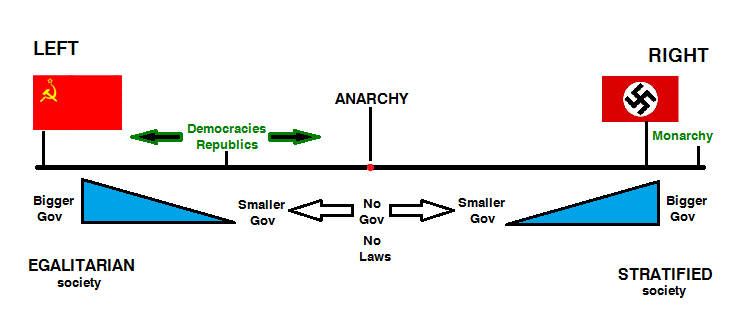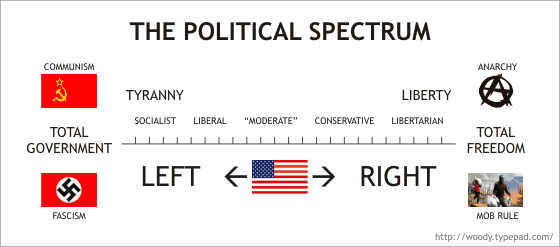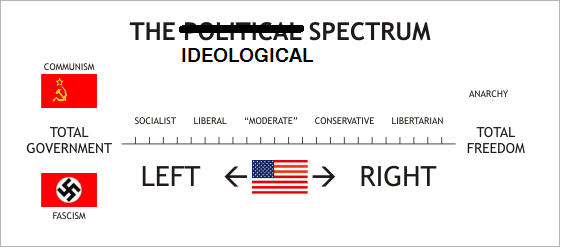@CWO:
However, the thing about the first chart which I find problematic is that it puts two different dichotomies on the same continuum: the terms “left and right” and the concepts of Total Government versus Total Freedom. As two separate continuums (continua? whatever…) on two separate charts, they’d be clear enough. Putting them together, however, creates a one-to-one correlation at each extremity of the chart that doesn’t completely hold up, as shown by the fact that, when you go from the first chart to the second one, Nazi Germany jumps from the left side to the right side.
That is the issue. We are trying to define two different interpretations or meanings of Left and Right on a single scale, which is difficult if not entirely impossible. It is the unfortunate circumstance that a jump occurs, as you pointed out, but it is like comparing the same data on graphs with different axes. The axes of graph one (the Ideological model) are system of government vs aggregate government control. Graph two (the Political model) has system of government vs social stratification. Again, neither one is more valid than the other, they are just comparing the same data set (system of government) against a different data set.
Something like this is perhaps a little better, because it tries to incorporate both, albeit imperfectly:

The above is (once again) theoretically speaking.
@wheatbeer:
Also, what happens when an ideology only wants control over specific segments of life?
Lets say an ideology wants totally unregulated capitalism but also wants total control over religion, sexuality, speech, etc.?
This is a good point because it really shows the flaw in any of these scales or graphs. It is pretty easy to illustrate one extreme or the other, but it does not handle middle ground very well. For example, in the above scale I gave Democracies and Republics a wide range and put them on the Left (Egalitarian) side. Different national government models have significant play with how far they stray into laissez faire government or socialist-tinged government. Most also have right side elements such as recognized classes of people or nationalist tendencies. Theoretically, these constructs are not de jure, but rather de facto and we must view Democratic or Republican governments as Left entities. The economic-social constructs of class and national policy are just that; constructs that do not necessarily reflect the model of said government. For example: the classes in most democratic countries (lower, middle, upper) are due to economic realities not to a government structure which necessitates it. Whereas medieval feudal governments which structured a King, vassals and peasants (and serfs/slaves) with no possible upward or downward change in class for an individual.
In the end we may need an actual 2D graph with quadrants to fully flesh out the concepts. I have seen some of these, but not studied them very much yet.












